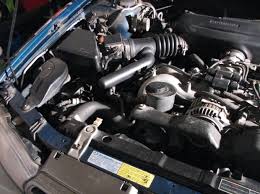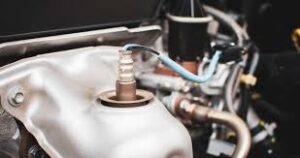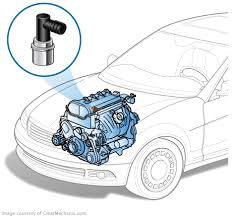Cars are complex machines; like any machine, they can develop issues over time. Rough idle is a frequent issue drivers face, characterized by engine vibrations while the vehicle is stationary. Your car idles rough but drives smooth—what’s with that? Let’s dive deep into understanding, diagnosing, and fixing this pesky issue.
Understanding Rough Idling
What is Rough Idling?
Rough idling occurs when your car runs unevenly or shakes while it is stationary. This can be pretty unsettling, and sometimes it feels like the engine will stall. It’s different from the smooth, steady hum you expect from a healthy engine.
Common Symptoms of Rough Idling
Your car is idling rough if you experience any of the following:
- The car feels shaky when idling
- The engine speed fluctuates (revving up and down)
- Strange noises coming from the engine
- The Check Engine Light might be on
Causes of Rough Idling
Now that we know about rough let’s explore the common causes. Several systems within your car can contribute to this problem.
Fuel System Issues
- Dirty Fuel Injectors
- Fuel injectors spray fuel inside the engine. If they get dirty or clogged, they cannot deliver fuel correctly, causing rough idling.
- Clogged Fuel Filters
- A clogged fuel filter restricts fuel flow to the engine, leading to uneven idling.
Ignition System Problems
- Faulty Spark Plugs
- Spark plugs create the spark that ignites the fuel-air mix in the engine, powering the vehicle. Worn or faulty spark plugs can cause misfires, leading to a rough idle.
- Bad Ignition Coils
- Ignition coils transfer the necessary voltage to create a spark. Faulty coils can disrupt this process.
Air Intake System Problems
- Dirty Air Filter
- Your car’s air filter acts like a shield, blocking dust and debris from entering the engine. A clogged filter restricts airflow, choking the engine and reducing its power.
- Vacuum Leaks
- Vacuum leaks can disrupt the air-fuel mixture, causing the engine to idle roughly.
Sensor and Control Issues
- Faulty Oxygen Sensor
- The oxygen sensor acts like a gas gauge for your engine, ensuring the right fuel mix for smooth operation. A faulty one throws off the balance and causes fuel delivery issues.
- Malfunctioning Mass Airflow Sensor
- It acts like the engine’s air traffic controller, ensuring the right amount of air gets in. If not, it can send incorrect data to the engine control unit (ECU).
Engine Mechanical Issues
- Worn Engine Mounts
- Engine mounts secure the engine to the car. Worn mounts can cause vibrations that feel like rough idling.
- Compression Issues
- Low-compression engines cause rough idling. The cause could be internal engine wear, such as worn piston rings.
Diagnosing the Problem

Visual Inspection
Start with a visual inspection. Look for obvious issues, such as disconnected or damaged hoses, dirty filters, or visible damage to engine components.
Diagnostic Tools
An OBD-II scanner is invaluable for diagnosing engine problems. It reads the error codes in your car and points you in the right direction. Professionals have advanced diagnostic tools and experience to pinpoint the problem accurately.
Fixing Rough Idling
DIY Solutions
- Cleaning Fuel Injectors
- Use a fuel injector cleaner to clear out deposits and improve performance.
- Replacing Air Filters
- Regularly replace your air filter to ensure optimal airflow to the engine.
Professional Repairs
For more complex issues, such as faulty sensors, ignition coils, or engine compression problems, it’s best to seek professional help. A qualified mechanic can make precise repairs and adjustments.
Preventative Maintenance
Regular Tune-Ups
Keep your car in top shape with regular tune-ups. This includes checking and replacing spark plugs, filters, and fluids.
Scheduled Maintenance
Adhere to your scheduled maintenance plan. Regular oil changes, filter replacements, and inspections can prevent many common issues.
Using High-Quality Fuel and Oil
Invest in high-quality fuel and oil. Their special cleaning additives help remove deposits and sludge buildup, keeping your engine internally clean.

Conclusion
Rough idling can be a nuisance that needs attention in your car. By understanding the potential causes and taking steps to diagnose and fix the issue, you can keep your car running smoothly and avoid more serious problems down the road. Remember, regular maintenance is key to preventing issues like rough idling.
Connecting Detroit City
If you drive through Detroit, the motor city, you know how important it is for your car to perform on its streets and historic automotive roots. This makes it crucial to maintain your vehicle. Don’t let rough idling disrupt your smooth ride around this iconic city. Regular car maintenance in Detroit and timely repairs ensure your car runs smoothly, whether down Woodward Avenue or heading to a Tigers game.
FAQs
Why does my car idle rough but drive fine?
Your car might idle rough due to dirty fuel injectors, faulty spark plugs, or a malfunctioning oxygen sensor. However, the increased engine speed can mask these problems, making the ride smoother.
Why does my car shake at idle but smooth out while driving?
Shaking at idle can be caused by issues such as worn engine mounts, vacuum leaks, or problems in the ignition system. These issues are less noticeable when the engine works harder at higher speeds.
Why does my car start rough and then smooth out?
A rough start that smooths out can indicate problems with the fuel system, such as clogged fuel injectors or a dirty air filter. It can also be due to ignition system issues that become less noticeable as the engine warms up.
How do you fix rough idling?
Fixing rough idling involves identifying the underlying cause. This includes cleaning or replacing fuel injectors, spark plugs, and air filters or checking for leaks and sensor issues. Regular maintenance and professional diagnostics are crucial to resolving the problem.










